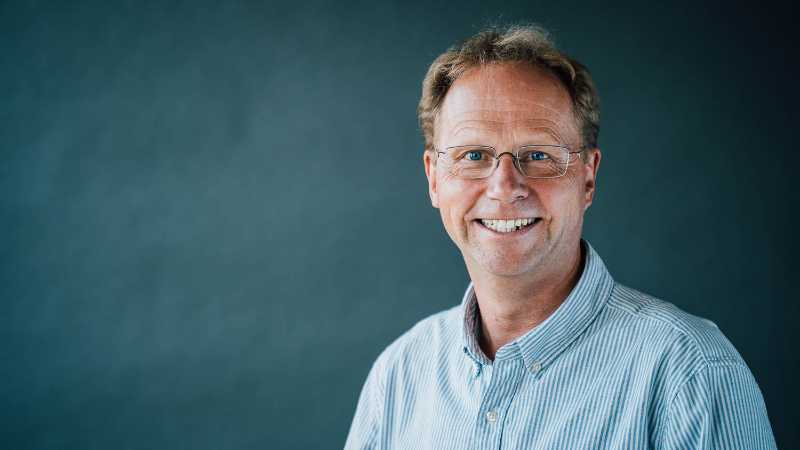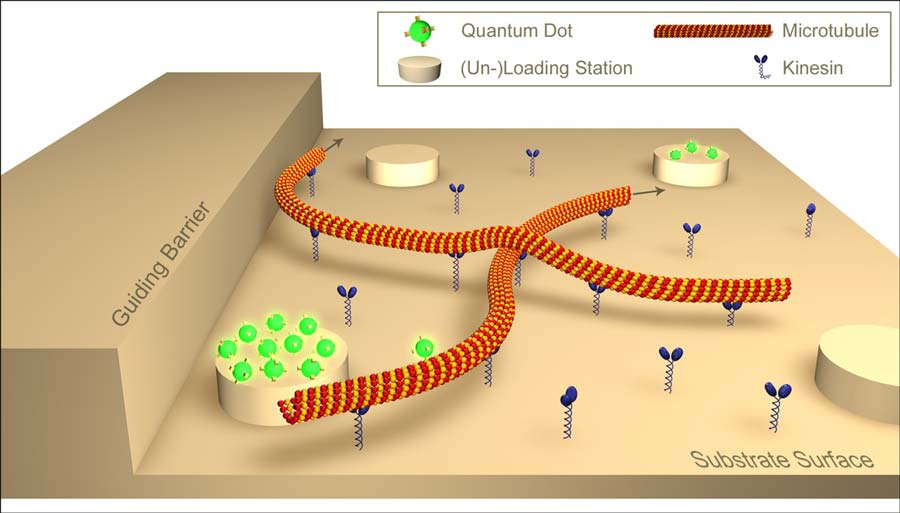Stefan Diez Group
Molecular transport in cell biology and nanotechnology

© TUD CMCB, Magdalena Gonciarz
Our lab is interested in the development and the application of novel optical techniques to investigate molecular transport in cell biology and nanotechnology. Building on our experience in single molecule biophysics and in the in vitro reconstruction of subcellular mechano-systems we study cooperative effects in motor transport and cell motility. Moreover we aim to apply biomolecular motor systems in a synthetic, engineered environment for the generation and manipulation of nanostructures. Thereby, our main emphasis is on the development of methods to control the nano-transport systems by external signals in a spatio-temporal manner. Towards this end we investigate novel biotemplate-based nanostructuring techniques and fabricate smart composite surfaces, where active enzymes are embedded in stimuli-responsive polymer layers.
The idea of using cellular machines in nanotechnology is intriguing because such machines are robust, can work in parallel, their size is in the nanometer range, they work with a high energy efficiency and their application is potentially cheap. Specifically we work on the setup of robust in vitro motility assays as well as on the spatial and temporal control over the motor activity by chemical, electrical and optical means. As one example, we have used purified kinesin motors in combination with chemically modified microtubules to transport and stretch individual lambda-phage DNA molecules across a surface. This technique, in contrast to existing ones, enables the parallel yet individual manipulation of many molecules and may offer an efficient mechanism for the generation of multidimensional, DNA-based nanocircuits.

Future Projects and Goals
The group will continue to utilize biophysical processes based on the generation of force by motor proteins and microtubules to construct and manipulate molecular structures in the nanometer range. We aim to establish a toolbox of novel, actively operating bionanomechanical components such as transporters, stretchers, compressors, rectifiers, colliders and explorers. These components will then be used in the setup of molecular reaction systems, the nanometer structuring and exploration of surfaces . Highly-sensitive optical imaging techniques will be crucial for the successful implementation of biomolecular processes into engineered environments. Future work will therefore also involve the development of novel single molecule imaging techniques using nanostructured surfaces and microfluidics systems. Thus, the group will strongly focus on the interface between biology and nanotechnology - not only to fulfill nanotechnological tasks by biomolecular machines, but also to use the high potential of micro- and nanotechnology to answer questions in the fields of cell biology and biophysics.
Methodological and Technical Expertise
- Single-Molecule Biophysics
- 3D-Nanometer Single-Particle Imaging and Tracking
- Synthetic Biology with Molecular Motors and Cytoskeletal Filaments
- Nanotechnological Applications of Biomolecular Transport Systems